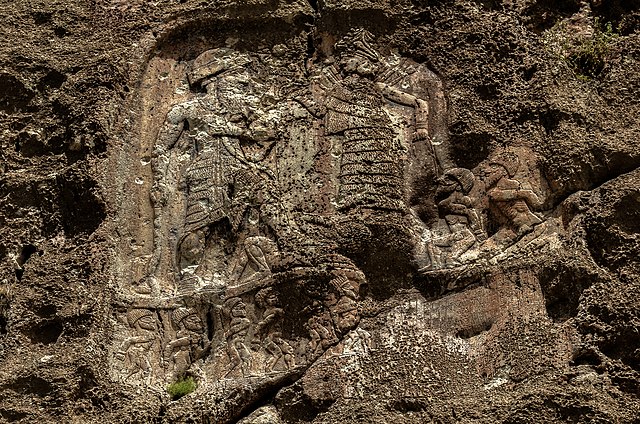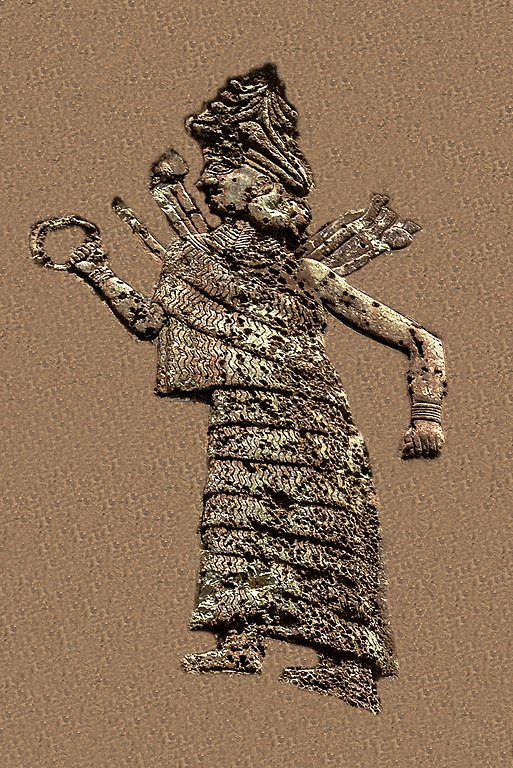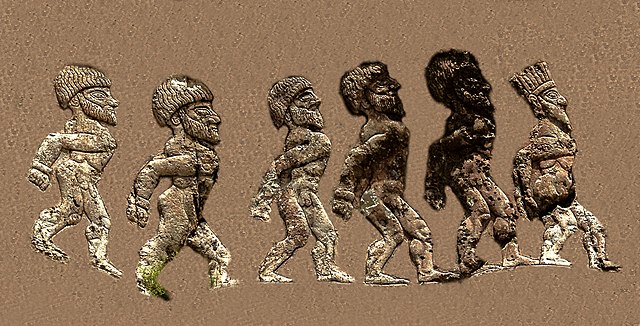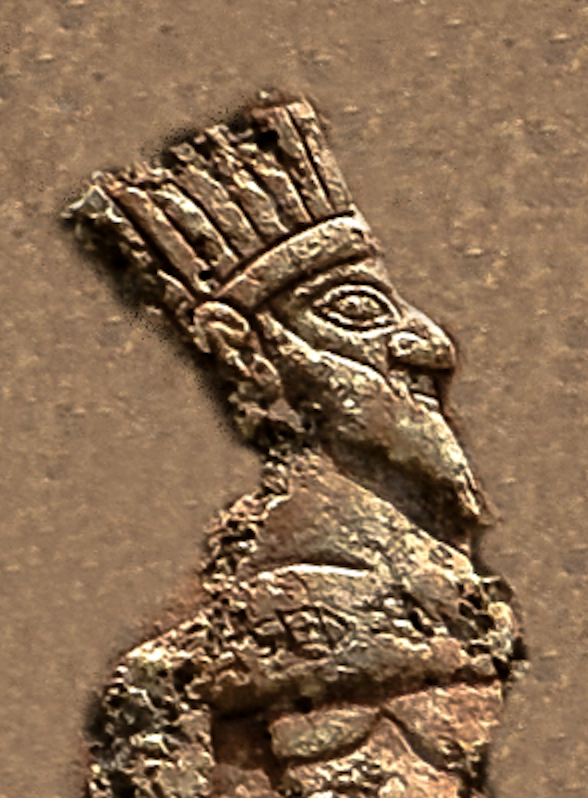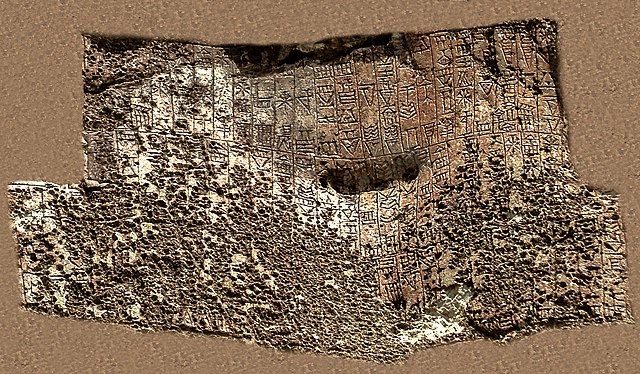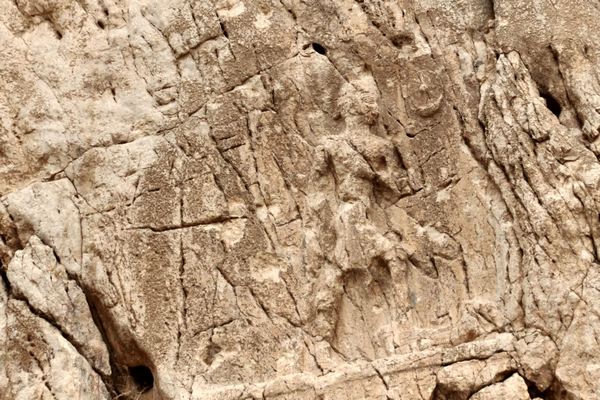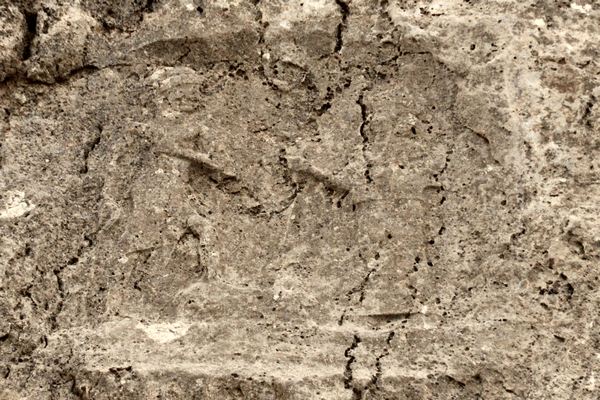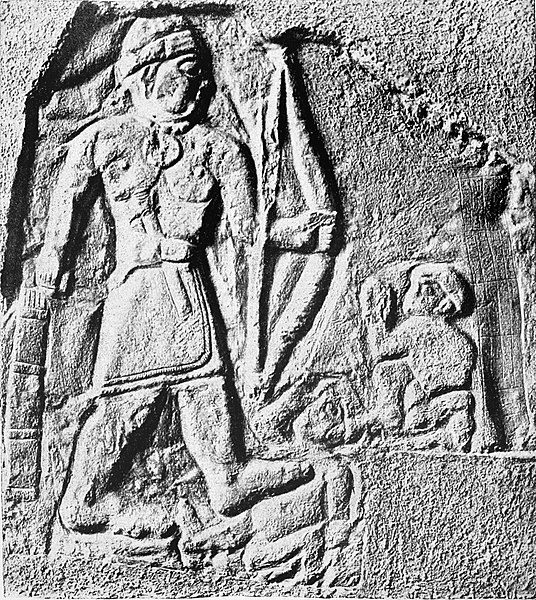
| LULLUBI
Territory of the Lullubi in the Mesopotamia area. 2300 BC – 675 BC Common languages : Unclassified Akkadian (inscriptions)
Religion : Mesopotamian religions
Today part of : Monarchy
Historical era : Antiquity
• Established : 2300 BC
• Disestablished : 675 BC
Today part of : Iraq and Iran
The Lullubi or Lulubi (Lu-lu-biki "Country of the Lullubi") were a group of pre-Iranian tribes during the 3rd millennium BC, from a region known as Lulubum, now the Sharazor plain of the Zagros Mountains of modern Iraqi Kurdistan, and the Kermanshah Province of Iran. Lullubi was neighbour and sometimes ally with the Simurrum kingdom. Frayne (1990) identified their city Lulubuna or Luluban with the region's modern Iraqi town of Halabja.
King Anubanini of Lullubi, holding an axe and a bow, trampling a foe. Anubanini rock relief, circa 2300-2000 BC. Sar-I Pul, Iran The language of the Lullubi is regarded as an unclassified language due to the complete absence of any literature or written script, meaning it cannot be linked to known languages of the region at the time, such as Elamite, Hurrian, Sumerian, Akkadian, Hattic and Amorite, and the Lullubi pre-date the arrival of Iranian-speakers by many centuries. The term Lullubi though, appears to be of Hurrian origin.
Historical
references :
Lullubi-ki ("Country of the Lullubi") on the Anubanini rock relief
Relief of the Lulubian Tardunni, known as the Darband-i Belula, the Darband-i Hurin or Sheikhan relief, Kurdistan, Iraq Lullubum appears in historical times as one of the lands Sargon the Great subjugated within his Akkadian Empire, along with the neighboring province of Gutium, which was probably of the same origin as the Lullubi. Sargon's grandson Naram Sin defeated the Lullubi and their king Satuni, and had his famous victory stele made in commemoration :
"Naram-Sin the powerful . . . . Sidur and Sutuni, princes of the Lulubi, gathered together and they made war against me."
—
Akkadian inscription on the Victory Stele of Naram-Sin.
Ka-Nisba, king of Simurrum, instigated the people of Simurrum and Lullubi to revolt. Amnili, general of [the enemy Lullubi]... made the land [rebel]... Erridu-pizir, the mighty, king of Gutium and of the four quarters hastened [to confront] him... In a single day he captured the pass of Urbillum at Mount Mummum. Further, he captured Nirishuha.
— Inscription R2:226-7 of Erridupizir.
The Victory Stele of Naram-Sin (circa 2250 BC), commemorating the victory of Akkadian Empire king Naram-Sin (standing left) over Lullubi mountain tribe and their king Satuni. Musée du Louvre Following the Gutian period, the Neo-Sumerian Empire (Ur-III) ruler Shulgi is said to have raided Lullubi at least 9 times; by the time of Amar-Sin, Lullubians formed a contingent in the military of Ur, suggesting that the region was then under Neo-Sumerian control.
Another famous rock relief depicting the Lullubian king Anubanini with the Assyrian-Babylonian goddess Ishtar, captives in tow, is now thought to date to the Ur-III period; however, a later Babylonian legendary retelling of the exploits of Sargon the Great mentions Anubanini as one of his opponents.
In the following (second) millennium BC, the term "Lullubi" or "Lullu" seems to have become a generic Babylonian/Assyrian term for "highlander", while the original region of Lullubi was also known as Zamua. However, the "land of Lullubi" makes a reappearance in the late 12th century BC, when both Nebuchadnezzar I of Babylon (in c. 1120 BC) and Tiglath-Pileser I of Assyria (in 1113 BC) claim to have subdued it. Neo-Assyrian kings of the following centuries also recorded campaigns and conquests in the area of Lullubum / Zamua. Most notably, Ashur-nasir-pal II had to suppress a revolt among the Lullubian / Zamuan chiefs in 881 BC, during which they constructed a wall in the Bazian pass (between modern Kirkuk and Sulaymaniyah) in a failed attempt to keep the Assyrians out.
They were said to have had 19 walled cities in their land, as well as a large supply of horses, cattle, metals, textiles and wine, which were carried off by Ashur-nasir-pal. Local chiefs or governors of the Zamua region continued to be mentioned down to the end of Esarhaddon's reign (669 BC).
Representations
:
Barbarian prisoner of the Akkadian Empire, nude, fettered, drawn by nose ring, with pointed beard, long hair and vertical braid. 2350-2000 BCE, Louvre Museum
Lullubi victim with pointed beard and long braided hair. Rock relief at Darband-iGawr. The depiction of the vanquished Lullubis is also similar in the Victory Stele of Naram-Sin In depictions of them, the Lullubi are represented as warlike mountainers. The Lullubi are often shown bare-chested and wearing animal skins. They have short beards, their hair is long and worn in a thick braid, as can be seen on the Victory Stele of Naram-Sin.
Rulers
:
1.
Immashkush (c. 2400 BC)
Anubanini rock relief :
The relief is located on the top of a cliff towering over the village of Sarpol-e Zahab. A second relief (Parthian Empire period) appears below
Anubanini rock relief at Sarpol-e Zahab, also called Sarpol-e Zahab II
King Anubanini
Goddess Ishtar
Prisoners of the Lullubis (detail)
Prisoners of the Lullubis and their king (detail)
Prisoner king (detail). He appears to be wearing a crown
Anubanini rock relief Akkadian inscription Other Lullubi reliefs :
Sar-e Pol-e Zahab, relief I. Beardless warrior with axe, trampling a foe. Sundisk above. A name "Zaba(zuna), son of ..." can be read. This is possibly the son of Iddin-Sin, a ruler of the Kingdom of Simurrum
Sar-e Pol-e Zahab, relief III. Beardless warrior trampling a foe, facing a goddess
Sar-e Pol-e Zahab, relief IV. Beardless warrior trampling a foe, facing a goddess
Relief of Tardunni, a possible Lullubi ruler, also holding weapons and trampling foes, with an inscription in Akkadian
Source :
https://en.wikipedia.org/ |
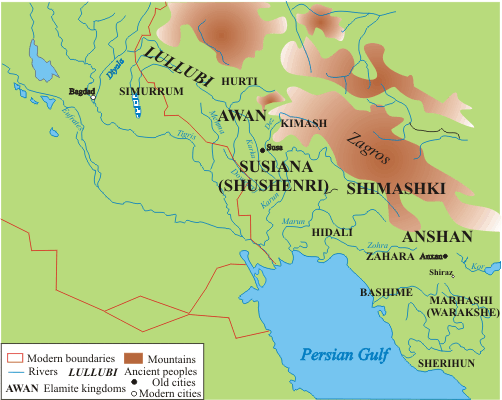
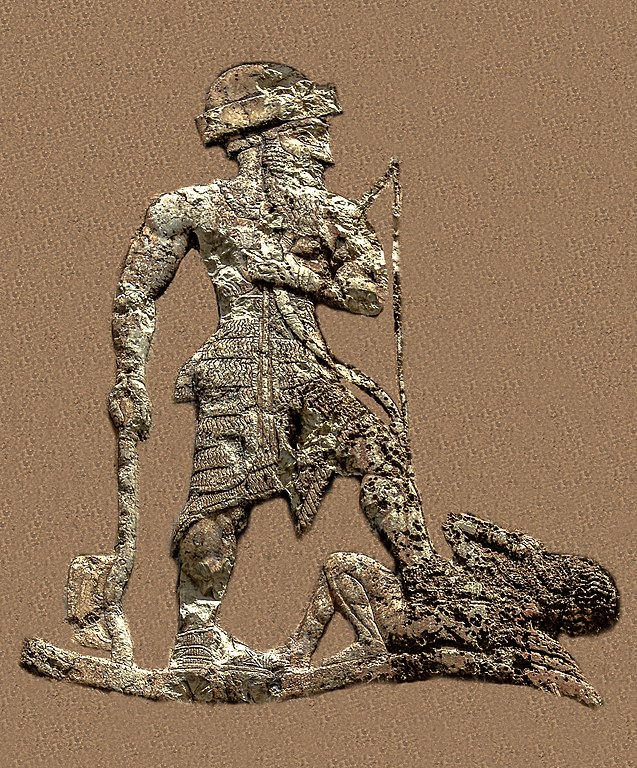
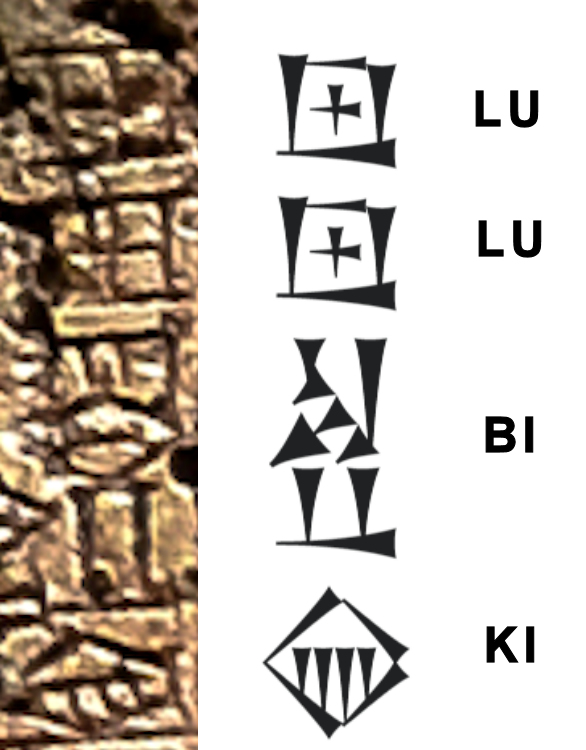
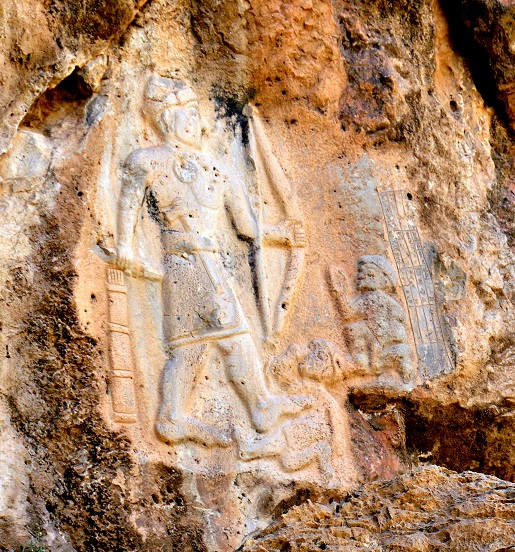
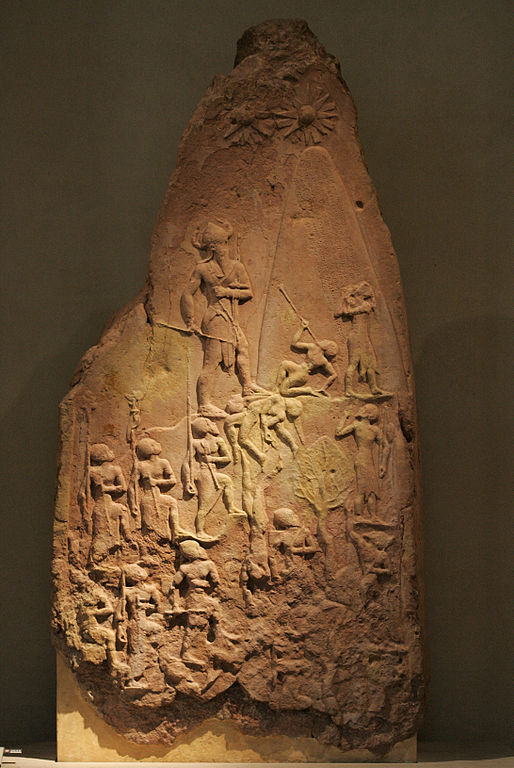

.jpg)

